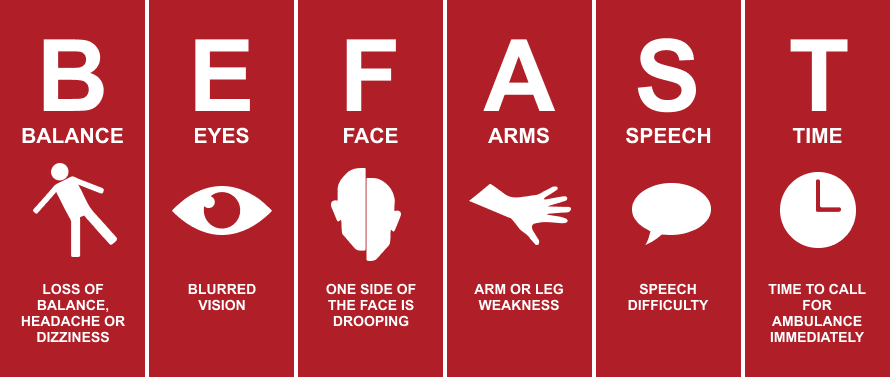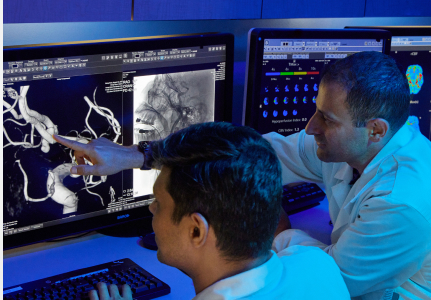Prevention
Stroke Prevention and Identification
Approximately 80% of strokes are preventable. Once a stroke does occur, patients who arrive at the emergency room within 3 hours of their first symptoms often have less disability three months afterward than those who received delayed care. Knowing what to look for can make the difference.
How You Can Stop Stroke Before it Starts

While a stroke can occur at anytime to almost anyone, there are ways you can reduce your risk, starting today.
Control your high blood pressure.
You can control the single most important treatable risk factor simply by changing diet and exercise habits and taking medication if needed. The goal is to keep blood pressure below 130/80.
Manage your diabetes.
Diabetes can be managed with a combination of diet, exercise, and medications. The goal is to keep blood sugar levels (HgA1C) less than 7%.
Stop smoking.
There are tools available to help smokers kick the habit that include medications that help remove the cravings and side effects of quitting.
Lower your cholesterol.
High cholesterol is one of the main causes of ischemic strokes. It can be managed by diet, exercise, and medication.
Treat atrial fibrillation (a-fib).
A person with this type of irregular heartbeat is at risk for developing a blood clot in the heart, which can then travel to the brain and cause a stroke. A-fib is treated with blood thinners that make it harder for clots to form in the heart.
Get checked for carotid artery disease.
Fatty deposits/plaque can develop in the two large arteries that supply blood to the front of the brain and possibly decrease blood flow. A carotid endarterectomy [en-dahr-tuh-rek-tuh-mee] is a procedure used to remove plaque in these arteries.
Know the Warning Signs of a Stroke


Young Women May Face Greater Stroke Risk Than Young Men
Women between ages 25 and 44 are having more strokes than men their age, a new study shows.
Innovative Treatment

Thrombectomies are transforming how doctors treat stroke cases
Advances in imaging technologies now allow us to pinpoint the location of a blockage in the brain, making it possible for a growing number of patients to benefit from thrombectomy, a procedure in which we mechanically remove the clot to restore the flow of blood to the brain.





